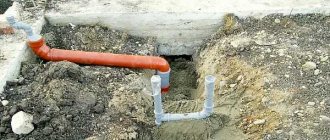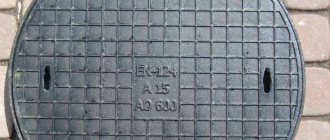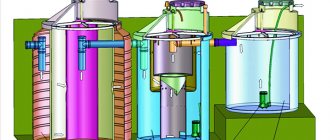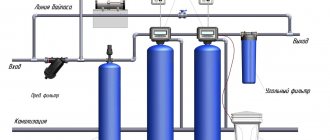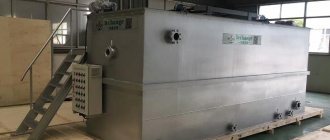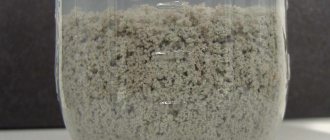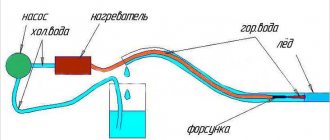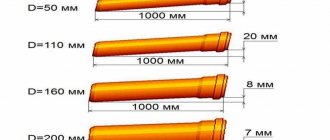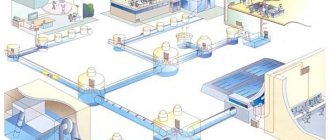The sewerage system is one of the most important inventions of mankind, known since ancient times, but has not lost any of its relevance and significance. Even the principle has changed little, having been enriched only with special mechanisms and devices.
Sewerage is a necessary and extremely important system of sanitary facilities for people. As a rule, it covers the entire settlement, so it directly affects all its residents. Let's take a closer look at this issue.
What is sewerage
Sewer networks are one part of the overall water supply and sanitation system that performs the functions of collecting and removing wastewater and organic waste. Somewhat simplified, this is an extensive network of pipelines that enter every city building and ensure the removal of wastewater to a specialized structure. The somewhat biased attitude of most people towards sewage is completely undeserved, since its importance and responsibility cannot be exaggerated. Suffice it to remember that all outbreaks of epidemics occur in backward countries with a complete lack of infrastructure.
The composition and operation scheme of the complexes may be different. This is due to the size of the settlement, the number of buildings and people living in them. The functioning of the sewer network requires water, which is used to transport solid waste. No other methods have been invented, so sewerage is part of the water supply complex, being one of the priority parts of the city infrastructure. The operating conditions of the system are quite harsh; it operates all year round and needs protection from freezing. To do this, pipelines are placed underground, to a depth exceeding the level of soil freezing in winter. Considering that the network permeates the entire city, entering every house, one can quite clearly imagine the volume and extent of the spread of the complex.
Sewer networks
Sewage equipment
Sewerage laying
The main equipment for sewerage is pipelines of various sections. The diameter of the pipes is selected based on the required productivity (number of drains per unit of time).
Sewage systems for a home or cottage are usually made of plastic pipes with a diameter of 160, 110 and 50 mm. There are pipes of other diameters, but they are rare in everyday life. For ease of installation, the pipes have special flanges and rubber sealing rings.
Manufacturers produce a wide range of plastic elements for the installation of sewer systems. This includes:
- Corner elements 30, 45, 60, 90;
- Tees 30, 45, 90;
- Tees with bends of smaller cross-section;
- Adapters from one diameter to another, for example, 110 mm-50 mm;
- Plugs;
- Inspection windows;
- Pipes with a length of 0.5 to 4 m.
Elements of the sewerage system
Previously, before the widespread use of pipes made of polyethylene, polyvinyl chloride or polypropylene, the main material for the production of sewerage equipment was cast iron. Cast iron fittings are heavy and prone to corrosion. The situation can only be saved by careful insulation of the outer surface of cast iron pipes from the influence of the external environment. Currently, you can find quite a lot of sewage systems that have not yet undergone modernization and are made of metal equipment.
External sewerage networks can use large-diameter ceramic or concrete pipes. For inspection and cleaning, sewer wells are installed at a certain distance on the external sewerage pipelines.
History of origin
The history of sewerage goes back many centuries. The oldest known system is the one in the ancient Indian city of Mohenjo-Daro, which was discovered during excavations. It is about 4600 years old. Systems are known in Ancient Rome (a striking example is the Great Cloaca, which still operates today, serving as a storm sewer) or Ancient China (in the city of Linzi). The description of these finds indicates
Medieval Europe lagged noticeably behind in this regard, since the invasion of barbarians swept away almost all the remains of Roman buildings, and there was no one to maintain and generally deal with social systems. The re-emergence of the network, which occurred at the end of the 17th century, was forced, caused by epidemics of infectious diseases that brought the entire European civilization to the brink of extinction.
In Russia, the history of sewerage is similar to Europe. The wastewater disposal systems were built according to the Roman style, but the use of wood instead of marble made them short-lived, and during the reign of Ivan the Terrible they were abandoned. This led to an outbreak of plague at the end of the 18th century. It is known that in Moscow neither water supply nor sewerage were fully created until the very beginning of the 20th century.
In the modern world, the development of sewer systems, thanks to technological advances, has been brought to perfection. New plumbing devices, materials, methods of processing and disposal of waste have appeared. Standards and requirements have been developed for sanitary and technical support of systems, violation of which threatens with serious penalties or even criminal prosecution.
Septic tank
The principle of operation is that all wastewater from the sewer pipe flows into the first chamber, its bottom is concreted. Heavy particles settle to the bottom and are gradually processed by special anaerobic bacteria. All solid waste decomposes, releasing gases that escape through the vents. When designing, it is important to consider the size of the vent.
When the first chamber is filled, water flows into the second. If this is the last container, there is no need to make a hard bottom in it. If other containers are installed, the bottom should be concrete. In the last chamber, a cushion of crushed stone and sand is installed at the bottom; thanks to these components, water quickly goes into the soil.
Septic tank with biofilter
With the help of anaerobic bacteria, all organic waste is processed. As a result, the septic tank does not need to be pumped out for 10-20 years, and there is no need for regular cleaning. But this is provided that the volume is selected correctly. One person uses 200 liters of water per day. The volume of one container should be 9 m³ for a family of 4 people. This is enough for the normal functioning of the system.
Two-chamber septic tank
This design is reliable and low cost. It consists of two chambers, the first one removes large particles. They settle to the bottom under their own weight. Moreover, the bottom is concreted (if plastic containers are not used). You can make a septic tank from plastic containers of a suitable size. But it’s cheaper to purchase several reinforced concrete rings and make wells.
Types of sewer systems
There are different types of sewage systems that operate according to their own principles or perform specific functions. Based on functionality and location, they are distinguished:
- internal sewerage . Unites all pipelines connected to plumbing fixtures (baths, sinks, toilets) and combined into a single channel;
- external sewerage . A network of underground pipelines through which wastewater moves to settling tanks;
- treatment facilities . They clarify wastewater, remove pollutants and organic waste, and return it to water bodies.
Example of indoor and outdoor device
According to the tasks performed, sewer systems are:
- household (household and fecal). Designated in the documentation K1;
- stormwater (K2);
- industrial (K3).
Sewerage K1 can be:
- centralized , i.e. the pipeline leaving the residential premises is connected to the general structure of the city sewerage system;
- autonomous _ Sewage and organic waste are stored and subsequently removed, or clarified, processed and disposed of in our own low-capacity treatment facilities ( septic tanks ).
Basically, the systems consist of pipelines. The share of other equipment is relatively low and is concentrated in wastewater treatment plants. These are pumps, separators and other devices that transport, pump and dispose of wastewater. The technical characteristics and composition of these units depend on the volume of wastewater and the general parameters of the system.
You may also like - How the sewage system works in an apartment building
Types of recyclers
Depending on the sewer system, you will use different types of cleaning systems and secondary elements. If you are planning to build a sewerage system that can last for several decades, be prepared to invest a large amount of money in it.
Storage sewer
Cumulative sewer systems are designed to store waste water. You can make an individual system (sewage), but how to choose a pump for sewerage depends on the installation conditions. A pump is necessary if the distance to the storage tank is large. A storage sewer is an improved cesspool, but it has a peculiarity - waste does not go into the soil. Design:
- Determine the location where it is best to install the sewer container.
- Calculate the volume required for the normal functioning of the sewer system. The main thing is to keep the sewer tank filled as long as possible.
- Select installation method. In most cases, the container is buried in the ground.
- Establish a schedule for dust inspection and cleanup.
Among the disadvantages of sewerage, one can highlight the need for cleaning and a platform to ensure access for cars. If it is not possible to organize access for a sewer truck to the sewer, you need to install pumps for pumping. The advantages include:
- Low cost.
- Environmentally friendly, since all waste is drained into a sealed tank.
- Simple installation and sewer connection.
- There is no need to install special equipment for maintenance.
Septic tanks
The peculiarity of a septic tank is that it purifies all wastewater. There are three types of this type of sewer:
- Sewers with post-treatment using soil - they have several chambers, and the latter does not have a closed surface.
- Cumulative sewer systems are completely sealed containers that are connected to the drainage system.
- If sanitary standards do not allow the release of poorly treated water into the soil, sealed sewers are used.
When operating a sewer septic tank, there is no need to clean the tank. The structure consists of the following elements:
- Several containers connected using pipes.
- Sealed lids on all containers.
- Ventilation holes.
- Connecting pipes.
Local treatment stations
The advantage of this type of sewage system is its high productivity and degree of purification. But the cost of such sewerage systems is high, so they are rarely used for installation in private homes. The sewer system is a septic tank, but wastewater treatment is much more efficient. Suspended particles are crushed, decomposed by bacteria, and water is formed at the outlet.
The principle of operation of the sewerage system
Let's look at how a public or individual sewer system works:
Centralized networks
The design and composition of centralized systems are approximately clear to most users, although almost no one has a detailed understanding. The composition of the network has a strict order, although outwardly it may look chaotic. The internal sewage system is connected to the external part of the system, which consists of several groups:
- yard;
- street;
- collectors.
External networks have a non-pressure structure, i.e. wastewater moves by gravity. To do this, all pipelines are installed at a certain slope, determined by SNiP or departmental standards. The organization of external networks is carried out according to different types:
- general alloy Both domestic and storm water are sent to a single receiver;
- separate _ For storm and domestic wastewater, own collectors are used, not combined into one complex;
- semi-separated . A common alloy collector is used, but the wastewater is delivered through separate lines.
Wastewater contains a large number of active or aggressive components. This is especially noticeable in industrial systems, where a large amount of enterprise waste enters the wastewater. This puts forward specific requirements for the material of pipelines and wells. In their production we use:
- cast iron;
- polyethylene;
- polypropylene;
- fiberglass;
- polyvinyl chloride;
- reinforced concrete pipes and rings for collectors.
There are pipes made from other materials, but they are short-lived and are currently practically not used.
Centralized sewerage
It does not have to be citywide: a system that is used jointly by several private houses, commercial facilities, etc. can be centralized. Connecting to it has the following features:
- Before joining the centralized sewer system, the owner of the property coordinates this with the service organization. If we are talking about an urban system, it will be necessary to develop a connection plan, provide design documentation, etc.;
- The owner of the facility carries out the work on arranging pipelines, inspection wells and other elements to the connection point independently. The insertion is carried out under the supervision of representatives of the service organization;
- the nearest drop well is used as a connection point, and it is important that the sewer pipes from the building to it are laid at a slope. If the distance between the object and the drop well is large, inspection wells are additionally installed;
- Connecting a number of objects to centralized systems is impossible. These are some manufacturing, agricultural, and industrial enterprises with heavily polluted or toxic waste effluents. For such facilities, their own treatment facilities are installed.
You can connect an apartment building, a private residential building, a commercial facility, etc. to the centralized sewer system. With such a connection, it is necessary to strictly comply with the technical requirements set out in the documentation agreed with the management organization.
Autonomous systems
The emergence of autonomous complexes occurred relatively recently, with the development of individual housing construction. Installing your own sewer system was an attractive idea that made it possible to create modern and comfortable living conditions in a private house or cottage. Initially, only internal lines that carried wastewater into cesspools or containers were popular. But the need for frequent cleaning and removal of waste created a lot of problems, which forced us to abandon the old method and look for other options. The main type of autonomous sewage system that is common today is called a septic tank. It allows you to either completely abandon waste removal and sewer cleaning, or significantly increase the interval between these actions.
The principle of operation of a septic tank is to settle wastewater and process solid waste using special bacteria. As a rule, a septic tank is a closed container divided into several (2-4) adjacent compartments. Once in the first compartment, the wastewater gradually settles, and solid fractions settle to the bottom. There is an overflow hole at the top of the compartment. As it fills, partially clarified waste flows through it into the next compartment. They undergo further settling and clarification in the second compartment until it is filled to the top and begins to release clarified water further. The final node is either a filtration well or a filtration field.
A well is a type of collector that does not have a bottom. Typically, it consists of several concrete rings set on a bed of sand and gravel. Getting into it, clarified water is absorbed through the layer of bedding into the soil, further purifying itself.
The filtration field is one or more pipes with multiple holes along the entire length. The incoming water is discharged from them into a layer of gravel and sand, being further purified and absorbed into the soil. Unlike a well, pipes do not need to be buried to great depths, but a considerable area must be allocated for them. Considering the size of land plots, the preference given to wells is understandable. The only limitation is situations where the site has high groundwater levels.
More details about septic tanks in the article - Sewerage in a private house - step-by-step installation with your own hands
Types of sewerage
There are different types of sewers for a private home; two large groups can be distinguished:
- Gravity - the design has many advantages, since it does not require pumps or a nearby electrical network. During operation there is no need to spend extra money on maintenance. The system is convenient to operate - all wastewater flows through the pipes under the influence of its own weight due to a slight slope. The main thing in the calculations is to correctly determine the magnitude of the slope. It is advisable to make a slope of 3 cm per linear meter of pipe.
- Water moves at a faster speed than the solid particles it contains. Therefore, if you make the slope larger, the water will drain, and solid particles will remain in the pipe. As a result, blockages will appear that need to be cleared. The disadvantage of such a system is that it will not be able to function at a great distance from home. If you decide to use this type of sewer in a private house, you must choose the correct slope value. And most importantly, you can’t make turns.
- Pressure type sewer systems are considered the best option if the distance from the septic tank to the house is large. The principle of operation is that the pump creates pressure, and all waste tends to exit along with water. If pumps are used, it is allowed to turn the pipes; they will not have any effect. Among the disadvantages, one can highlight the fact that electricity is constantly consumed, and if the power goes out, it will not be possible to use the sewerage system.
Before installing and installing a sewerage system, you need to decide which type you need to use in your case. Based on the drainage method, the following systems can be distinguished:
- All-alloy - they combine all the drains. These are atmospheric, household and industrial waste.
- In a semi-separate system, industrial and domestic waste are sent to the sewer system, and atmospheric waste is first collected in ducts and ditches.
- The separate type is characterized by the fact that it has two channels. One receives atmospheric water, the other receives household waste. Thanks to this, the cleaning system is not overloaded.
External sewage system
Using an external sewage system in a private home, waste is collected and transported to the discharge point into a cleaning tank. The system includes not only pipelines, but also the following elements:
- Septic tanks.
- Inspection wells for monitoring the condition of the treatment system.
- Local treatment facilities.
